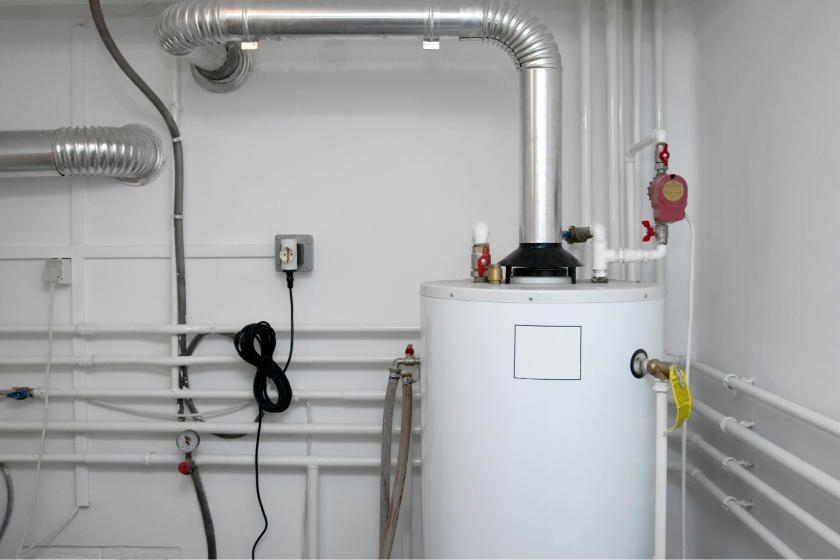What are your opinions regarding Tips on Maintaining a Water Heater?

Warm water is necessary for day-to-day comfort, whether it's for a revitalizing shower or washing dishes. To guarantee your warm water system runs successfully and lasts longer, normal maintenance is vital. This article provides functional pointers and insights on exactly how to maintain your home's warm water system to prevent disruptions and expensive repair services.
Introduction
Keeping your home's warm water system might appear overwhelming, yet with a couple of straightforward steps, you can ensure it operates efficiently for several years ahead. This overview covers everything from comprehending your hot water system to DIY upkeep pointers and recognizing when to call in expert help.
Relevance of Keeping Your Warm Water System
Normal upkeep not just expands the life-span of your hot water system yet also guarantees it operates efficiently. Ignoring maintenance can bring about reduced performance, higher energy expenses, and also premature failing of the system.
Indicators Your Warm Water System Demands Upkeep
Understanding when your warm water system needs interest can prevent major issues. Keep an eye out for signs such as irregular water temperature level, odd sounds from the heating unit, or rusty water.
Purging the Hot Water Heater
Flushing your water heater removes sediment build-up, boosting effectiveness and prolonging its life.
Checking and Changing Anode Rods
Anode rods protect against deterioration inside the tank. Examining and changing them when worn out is essential.
Facility Issues Requiring Professional Help
Examples consist of major leaks, electric problems, or if your hot water heater is regularly underperforming.
Routine Expert Upkeep Advantages
Specialist maintenance can consist of detailed examinations, tune-ups, and ensuring conformity with safety and security standards.
Checking and Readjusting Temperature Level Settings
Adjusting the temperature setups ensures ideal efficiency and safety.
Do It Yourself Tips for Upkeep
You can carry out a number of upkeep tasks yourself to keep your warm water system in top problem.
Checking for Leakages
On a regular basis evaluate pipes and links for leakages, as these can bring about water damages and greater bills.
Understanding Your Hot Water System
Prior to diving into maintenance tasks, it's helpful to understand the fundamental elements of your warm water system. Usually, this consists of the water heater itself, pipelines, anode poles, and temperature level controls.
Regular Monthly Maintenance Tasks
Regular monthly checks can assist capture small concerns before they rise.
Testing Pressure Alleviation Valves
Evaluating the stress relief valve guarantees it operates appropriately and prevents extreme stress build-up.
Shielding Pipes
Protecting warm water pipes reduces warmth loss and can save energy.
When to Call a Professional
While do it yourself maintenance is helpful, some issues require specialist competence.
Verdict
Normal maintenance of your home's warm water system is crucial for efficiency, long life, and price savings. By complying with these ideas and knowing when to look for professional help, you can make sure a trustworthy supply of hot water without unexpected disturbances.
How to Maintain an Instant Hot Water Heater
Before tinkering with your hot water heater, make sure that it’s not powered on. You also have to turn off the main circuit breaker and shut off the main gas line to prevent accidents. Also turn off the water valves connected to your unit to prevent water from flowing into and out of the appliance. 2. When you’re done, you have to detach the purge valves’ caps. These look like the letter “T†and are situated on either side of the water valves. Doing so will release any pressure that has accumulated inside the valves while at the same time avoid hot water from shooting out and burning your skin. 3. When the purge valves’ caps are removed, you have to connect your hosing lines to the valves. Your unit should have come with three hoses but if it didn’t, you can purchase these things from any hardware or home repair shops. You can also get them from retail stores that sell water heating systems. Read the user’s manual and follow it to complete this task properly. When the hosing lines are connected, open the purge port’s valves. 4. You should never use harsh chemical cleaners or solutions when cleaning your unit. Make use of white vinegar instead. It should be undiluted and you’ll probably use about 2 gallons. 5. Now flush your water heater. This task should probably take about 40 minutes. We can’t give you specific directions for this because the procedure is carried out depending on the type, model and brand of your heater. With that being said, refer to the user’s manual. 6. When you’re done draining the unit, you have to turn off the purge port valves again. Remove the hosing lines that you earlier installed on each of the water valves. Put the valve caps (purge port) back in their respective places and be very careful so as not to damage the rubber discs that are found inside these caps. 7. Now that everything’s back in place, check your user’s manual again to find out how to reactivate your water heating system. 8. Once it is working, turn one of your hot water faucets on just to let air pass through the heater’s water supply pipes. Leave the tap on until water flows smoothly out of it. https://www.orrplumbing.com/blog/2014/september/how-to-maintain-an-instant-hot-water-heater/

I was shown that article about How to Maintain a Hot Water Heater in a Few Simple Steps from a buddy on our other web property. Are you aware of another individual who is fascinated with the niche? Feel free to promote it. Thank you for your time. Kindly visit our site back soon.
Click Here To Read More